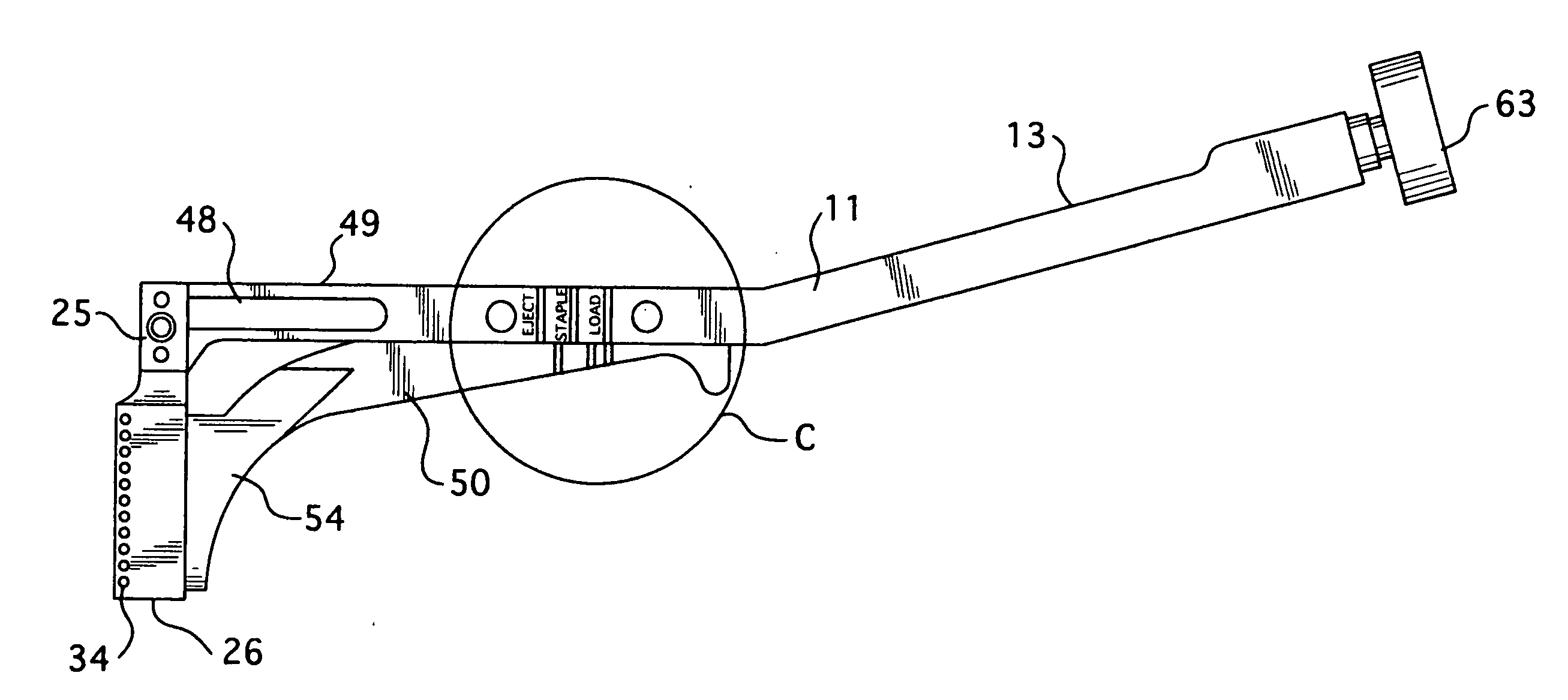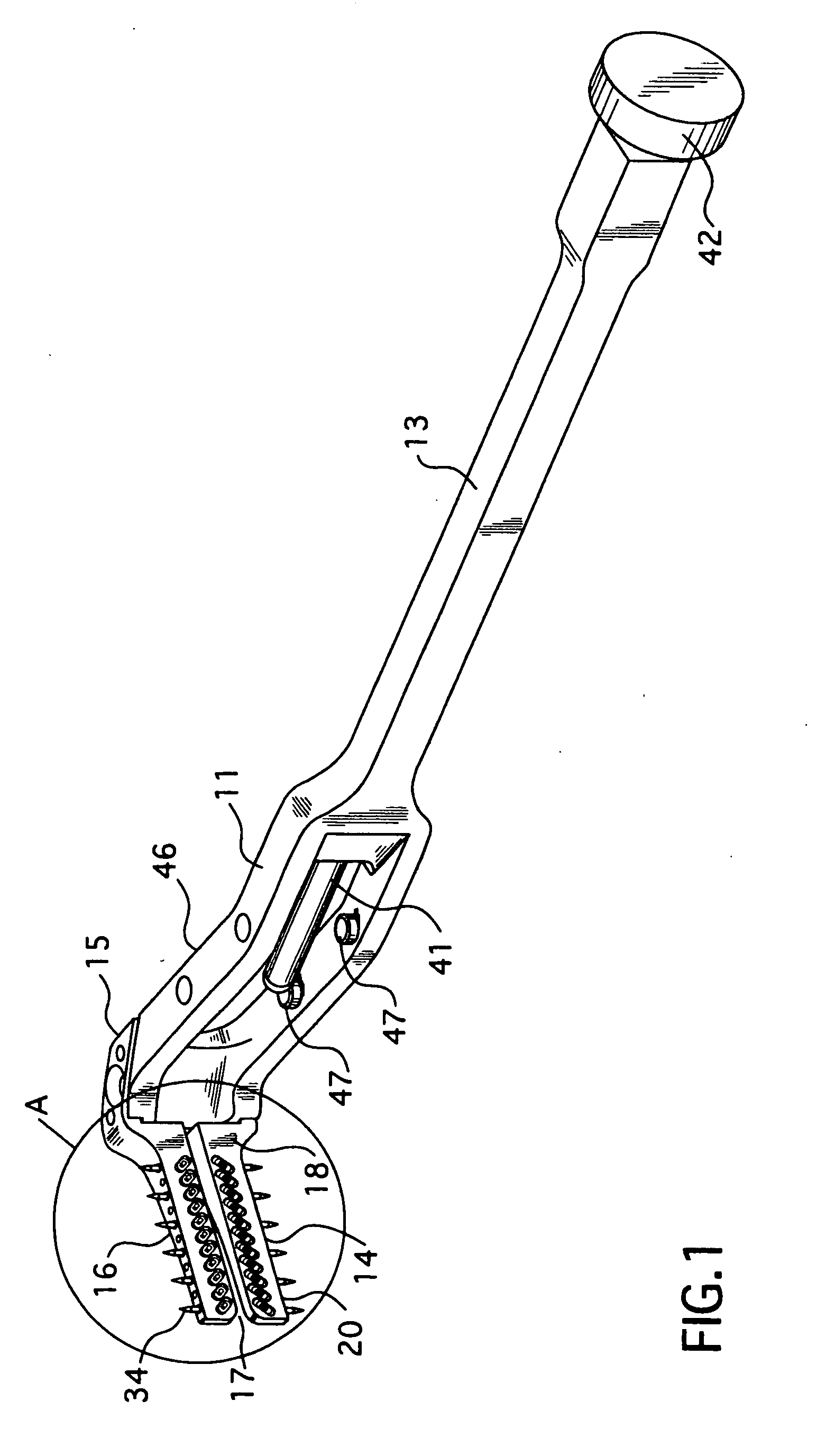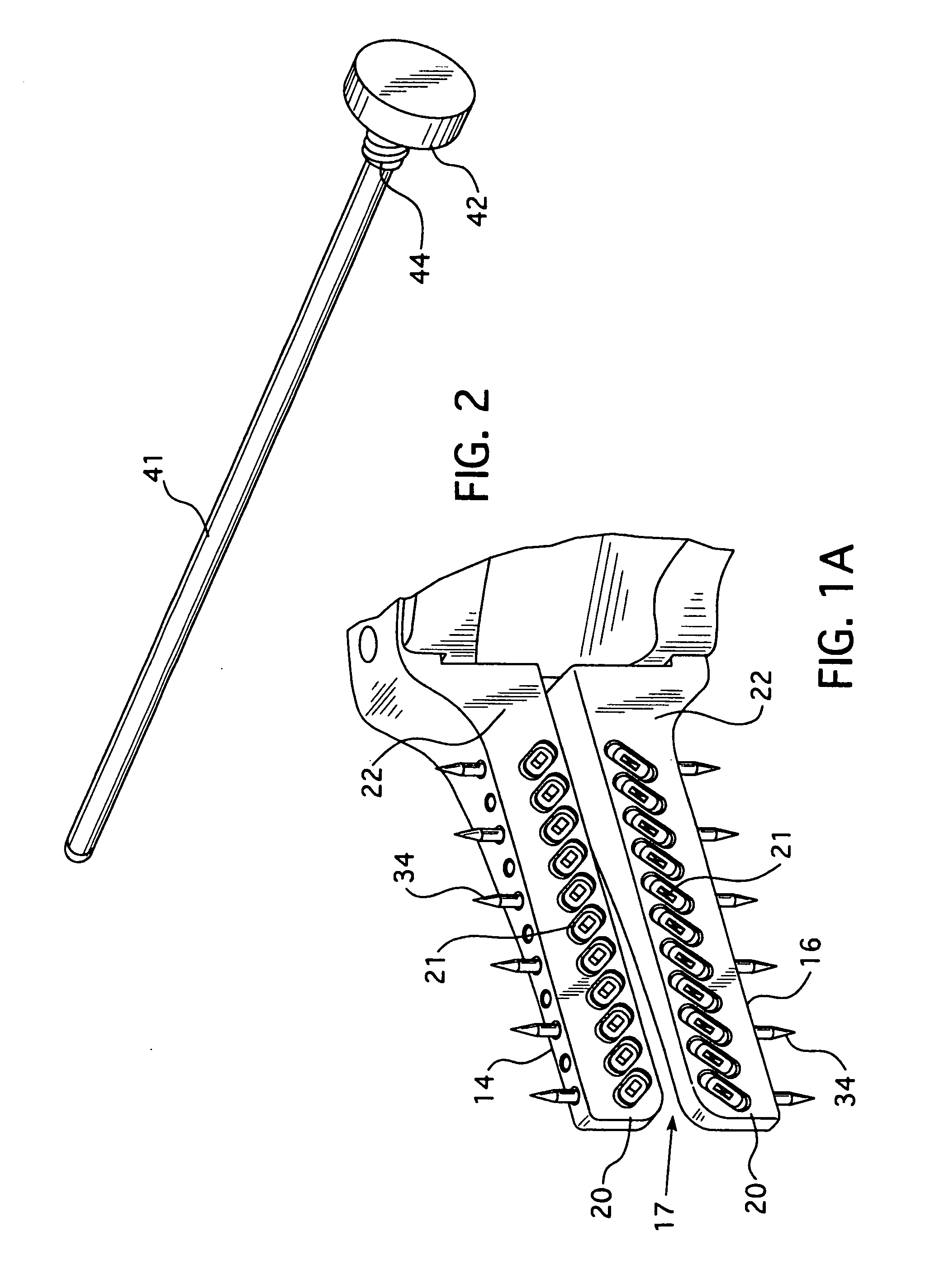Stapling apparatus for performing anastomosis on hollow organs
- Summary
- Abstract
- Description
- Claims
- Application Information
AI Technical Summary
Benefits of technology
Problems solved by technology
Method used
Image
Examples
Embodiment Construction
[0037]Referring to FIGS. 1 through 17, the anastomosis stapling apparatus 10 of the present invention is shown in its complete combined form in FIGS. 7 through 14. The stapling apparatus 10 is comprised of two separate combinable tools in the form of L-shaped clip retainer tool 11 and L-shaped staple retainer tool 12. Describing first the L-shaped clip retainer tool 11 shown in FIGS. 1 and 1A, the clip retainer tool 11 includes an elongated clip retainer handle 13 with a clip retaining foot 14 extending laterally from bottom distal end 15 of handle 13. Clip retaining foot 14 is comprised of a C-shaped clip jaw 16 which is positioned in a plane that is substantially transverse to the clip retainer handle 13 as illustrated in FIG. 1. C-shaped clip jaw 16 defines an organ exit gap 17 for removal of stapled hollow organ ends after stapling as will be explained in greater detail hereinafter.
[0038]Side face 18 of C-shaped clip jaw 16 provides an upwardly facing top face 22. Clip retainer ...
PUM
 Login to View More
Login to View More Abstract
Description
Claims
Application Information
 Login to View More
Login to View More - R&D
- Intellectual Property
- Life Sciences
- Materials
- Tech Scout
- Unparalleled Data Quality
- Higher Quality Content
- 60% Fewer Hallucinations
Browse by: Latest US Patents, China's latest patents, Technical Efficacy Thesaurus, Application Domain, Technology Topic, Popular Technical Reports.
© 2025 PatSnap. All rights reserved.Legal|Privacy policy|Modern Slavery Act Transparency Statement|Sitemap|About US| Contact US: help@patsnap.com



